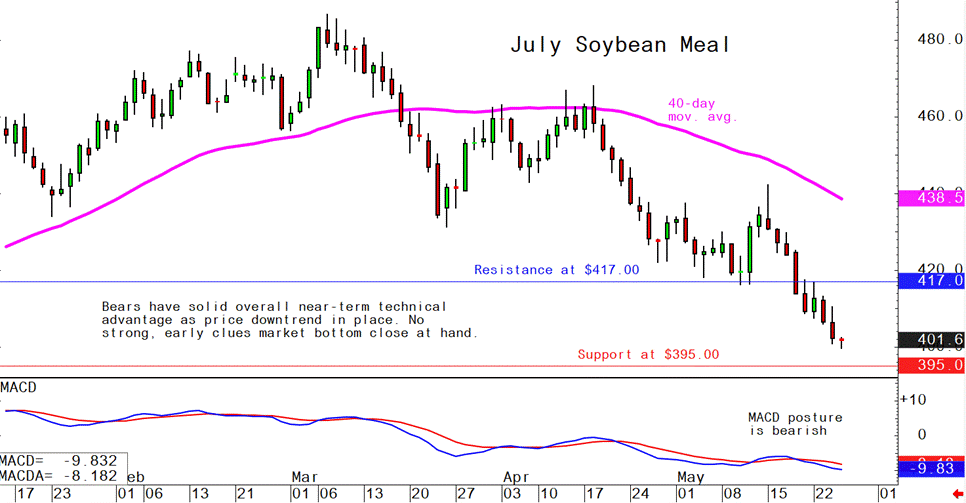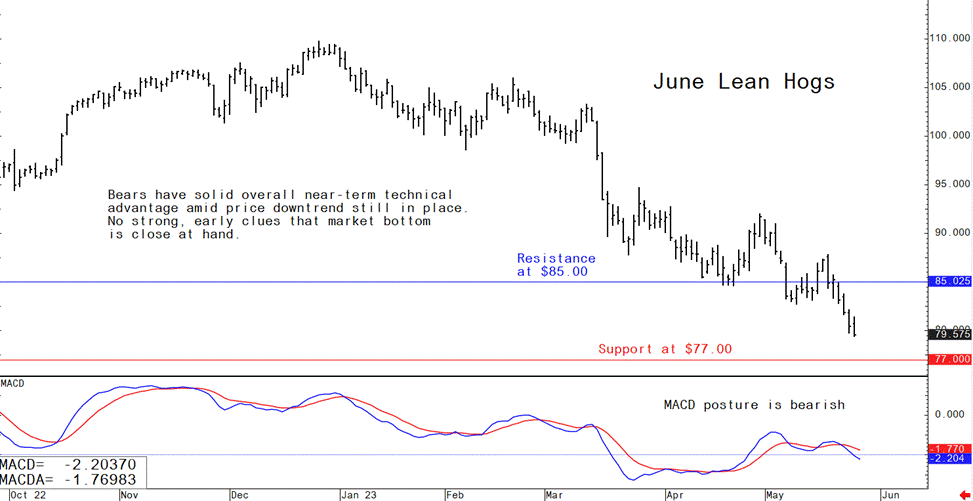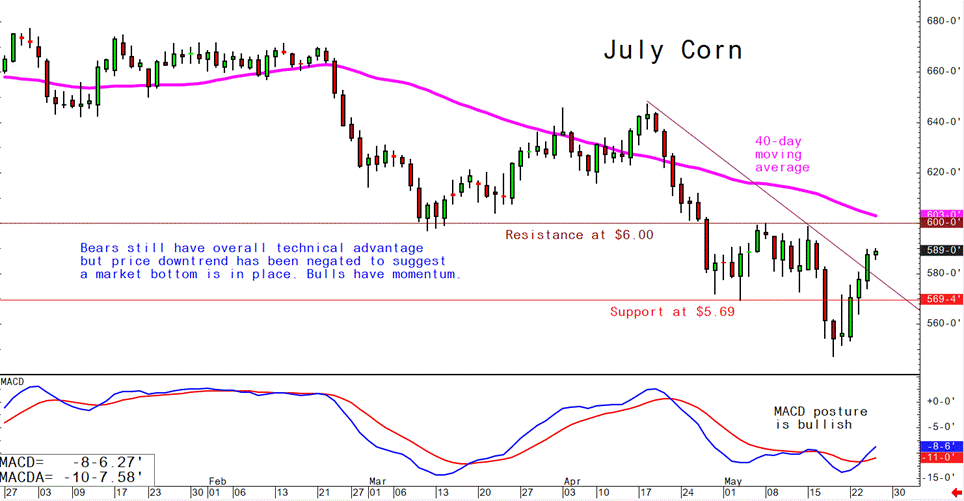



Pig outlook: Lean hog futures bears still in command
Analyst Jim Wyckoff shares an update on global protein newsJune lean hog futures this week set more new contract lows as prices continue to trend lower on the daily bar chart, with no strong, early clues that a market bottom is close at hand in the futures market. The latest CME lean hog index is $80.09, up 52 cents from last Friday. It is not unusual to see daily gains in the cash market like the last several weeks, but it is unusual to see futures fall below cash prices at this time of year. Continued selling pressure in futures is evidence of the bearish outlook toward consumer pork demand. Hog market bulls are hoping for a continued seasonal rebound in the cash market, as grilling season is now under way.
Weekly USDA pork export sales
US Pork: Net sales of 29,200 MT for 2023 were down 8 percent from the previous week and 29 percent from the prior 4-week average. Increases were primarily for Mexico (14,400 MT, including decreases of 300 MT), Japan (4,400 MT, including decreases of 100 MT), South Korea (4,400 MT, including decreases of 600 MT), Colombia (1,200 MT), and the Dominican Republic (1,100 MT, including decreases of 100 MT). Exports of 38,500 MT were up 5 percent from the previous week and 3 percent from the prior 4-week average. The destinations were primarily to Mexico (16,900 MT), China (4,600 MT), Japan (4,300 MT), South Korea (3,200 MT), and Australia (2,100 MT).
USDA Cold Storage Report shows exaggeration of seasonal trends
U.S. beef stocks declined more than average, while pork inventories climbed more than normal during April. That not only speaks to slaughter levels over the past month, but also demand. Beef stocks in frozen storage totaled 448.0 million lbs. at the end of April, down 29.8 million lbs. (6.2%) from March, nearly double the five-year average decline of 15.1 million lbs. during the month. Pork stocks at 565.5 million lbs. increased 31.6 million lbs. (5.9%) from March compared with the five-year average rise of 16.9 million pounds.
Massachusetts and Prop 12 impact
The Supreme Court's recent 5-to-4 decision in favor of California’s Proposition 12 has also unlocked the stalled Massachusetts Question 3. The ruling stated that Proposition 12, a voter-approved initiative, does not violate the U.S. Constitution, and that California can decide which meat products can be sold within its borders.
Following the Supreme Court's decision, Massachusetts Question 3 is set to be implemented. Originally scheduled to take effect last summer, the implementation of the measure was on hold pending the Supreme Court's ruling. Massachusetts Question 3 shares similarities with Proposition 12, imposing housing requirements on the pork industry.
The National Pork Producers Council (NPPC) has stated that nearly all U.S. pork products fail to meet the housing standards set by Massachusetts Question 3. Passed by 78% of Massachusetts voters in 2016, Question 3 requires farmers to give chickens, pigs, and calves enough space to turn around, stand up, lie down, and fully extend their limbs. It also bans the sale of eggs or meat from animals raised in conditions not meeting these standards.
Despite two legal challenges, Question 3 is now moving towards implementation. However, officials in Massachusetts have not yet provided detailed plans for its enforcement. (The two legal challenges: The first, attempting to block it from the ballot for procedural reasons, was ruled against by the Massachusetts Supreme Judicial Court in July 2016. The second was filed with the U.S. Supreme Court by a coalition of agricultural states, claiming Question 3’s provisions violated the dormant Commerce Clause; the Court declined to hear the case in January 2019.)
Both Proposition 12 and Question 3 stipulate housing requirements for animals, and products that fail to meet these standards are banned from being sold in the respective states. Question 3 additionally bans the trans-shipment of whole pork through Massachusetts, which could potentially impact neighboring New England states.
The next week’s likely high-low price trading ranges:
June lean hog futures--$77.00 to $85.00 and with a sideways bias
July soybean meal futures--$390.00 to $415.00, and with a sideways bias
July corn futures--$5.69 to $6.00 and a sideways-higher bias
Latest analytical daily charts lean hog, soybean meal and corn futures










